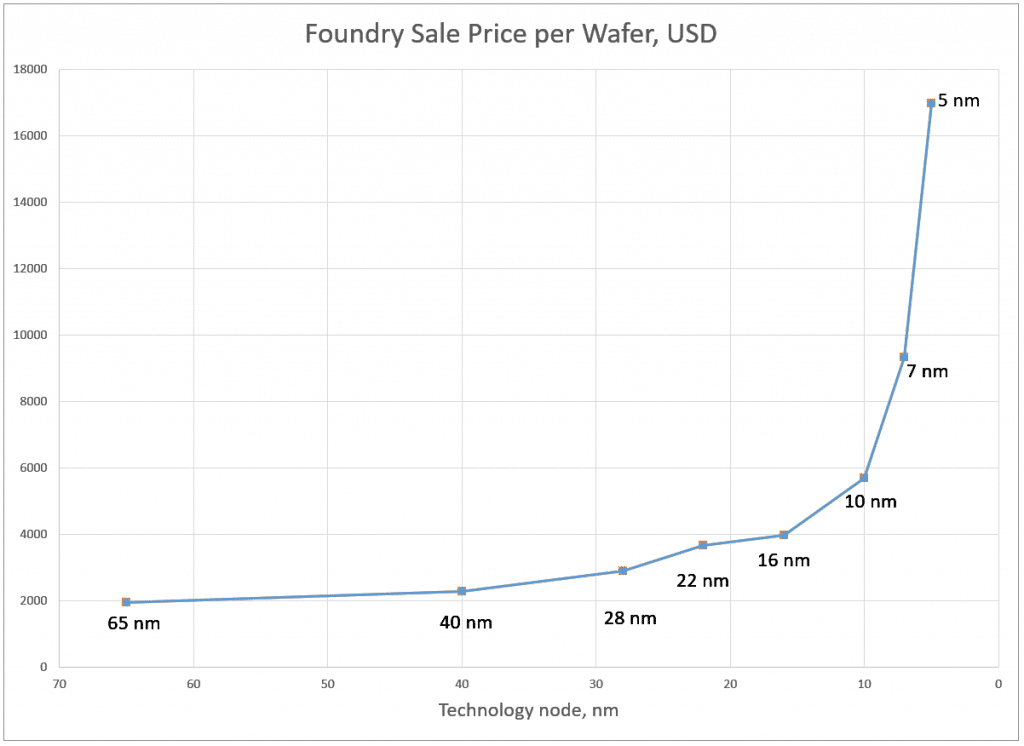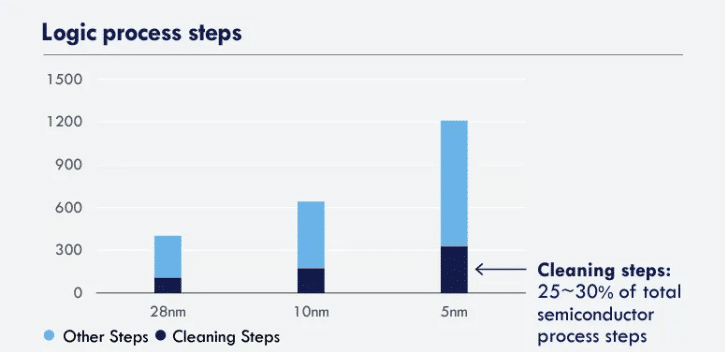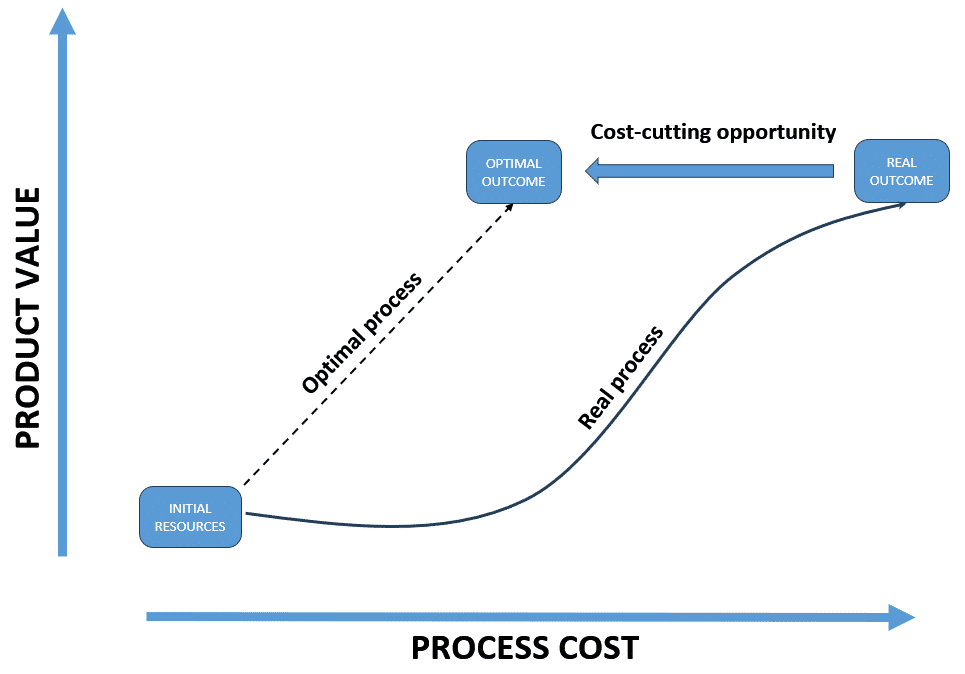This article explores the various components of production costs and the factors that lead to their escalation, such as inflation, technological advancements, and market shifts. It emphasizes the need for a problem-solving culture as one of the Effective Cost Reduction Strategies in Production. The article highlights hidden opportunities for cost reduction through process optimization and provides a simple strategy for reducing production costs by categorizing operations and improving or eliminating them accordingly.

Production cost refers to the total expenses incurred in making a product or providing a service, including materials, labor, and related costs. For a more detailed explanation of production cost, you can refer to different resources, such as Investopedia.
There are two primary components of production cost: direct and indirect expenses. Direct production cost components are expenses that can be explicitly traced to producing a particular product or service. These include costs for raw materials, labor directly involved in production, and manufacturing supplies. Indirect components of production cost are expenses that are not directly tied to a specific product or service but still contribute to the overall production process. These include overhead costs like utilities, rent, administrative salaries, and maintenance expenses that support the production facility as a whole.
Production costs systematically increase due to various factors, such as inflation, rising material prices, increased labor costs, technological upgrades, regulatory changes, and market demand shifts. These cumulative influences can drive up expenses over time, leading to an overall increase in the cost of producing goods or services.
Even if the same type of equipment is used, the implementation of a new product can dramatically increase production costs.
High-tech industries are an excellent illustration of the substantial increase in production costs resulting from the implementation of new technologies. According to an article published in MDPI, the foundry sale price of 5 nm node technology is eight times higher than that of 65 – 40 nm node technologies.

The production process has become increasingly lengthy, taking several weeks to several months. According to Fabricated Knowledge, the number of manufacturing process operations has significantly increased from hundreds to thousands of operations when transitioning to new technologies.

The process of product development is becoming increasingly sophisticated, complex, long, and expensive. But why? The answer is straightforward and clear: production companies are eager to implement a new product as soon as possible. They try to act like startups where the focus is on the result; the product should hit the market at any cost. Unfortunately, the engineering problem-solving approach is more like a marathon. Instead of addressing engineering problems at their core, patch solutions are often implemented. As a result, we see additional cleanings applied instead of solving the problem of wafer contamination, sophisticated and expensive tools and recipes used instead of solving a real problem, and so on.
The effect of cost reduction is significant in both operational efficiency and financial performance. Implementing effective cost reduction strategies can lead to decreased production expenses, improved profit margins, and enhanced competitiveness in the market. By optimizing processes, eliminating waste, and renegotiating supplier contracts, businesses can achieve substantial savings. Additionally, cost reduction efforts often promote innovation and efficiency, encouraging a culture of continuous improvement. Overall, the impact of cost reduction extends beyond immediate savings, contributing to long-term sustainability and growth.
Yes, cost reduction can affect x cost. By implementing effective cost reduction strategies, it is possible to identify and eliminate unnecessary expenses, optimize processes, and improve efficiency, which can, in turn, reduce the specific x cost. However, the exact impact will depend on the specific areas where the cost reduction measures are applied and how changes are managed in the production process.
Even large and established corporations will sometimes direct their teams to operate like startups for projects such as new product implementation. On the surface, this seems like a good idea: fast turnaround, quick results, and quick decision-making. It may also appear to be less expensive. However, in reality, production costs increase. At some point, cost reduction becomes the main concern of the corporation. Cost reduction is typically accomplished by reducing or eliminating “visible” expenses, such as searching for low-priced materials suppliers or staff layoffs. Nevertheless, many hidden opportunities can help reduce process costs.
The goal of any production process is to create a product, but functionally, it means increasing the value of initial resources to the value of the final product. This value elevation can be achieved in different ways, each requiring different expenses.

An actual process that is built at the “stress of startup conditions” allows to achieve the product value but at a relatively high cost. Nevertheless, we all know that an optimal production path does exist. The optimal process allows a manufacturer to achieve the target reasonably cheaply. The difference between optimal and real outcome costs is the hidden opportunity for effective cost reduction.
The high production cost is due to a lack of problem-solving ability.
A cost reduction concept is based on analyzing and modifying the process to optimize it. In general, unnecessary operations should be eliminated, while necessary operations should be improved.
In any production process, there are always two types of operations with opposite purposes, such as depositing or removing something. The key is to define the importance and functionality of each operation.
Each operation of the production process can be assigned to one of the following categories:
Productive – operations that result in irreversible changes and increase a product’s value.
Providing – operations that result in temporary changes that do not increase a product’s value.
Corrective – operations that result in improvements, typically by removing defects due to imperfections in other operations.
Productive operations – improve them by spending all your time and skills to make them more effective and functional.
Providing operations – eliminate them. Do not spend time on operations that do not increase a product’s value. Do not waste time and money, and think about how to eliminate these operations. For example, photolithography in microchip manufacturing is typically considered a providing operation. Refrain from developing photolithography and think about how to eliminate it.
Corrective operations – do nothing. Remove them from the flow when productive operations are improved. As a result, providing operations can be eliminated as well.
For more detailed information about process analysis with the PRIZ Platform, please refer to our articles: Process Functional Modeling with the PRIZ Innovation HUB and Unlock the Power of Process Functional Model: Identify Opportunities and Implement Solutions for Business Success.

Develop a problem-solving culture in the plant to reduce production costs.
Here ends the article on “Effective Cost Reduction Strategies in Production,” but if you’re interested in reading more, visit our blog. You’re sure to find a wealth of relevant information there.